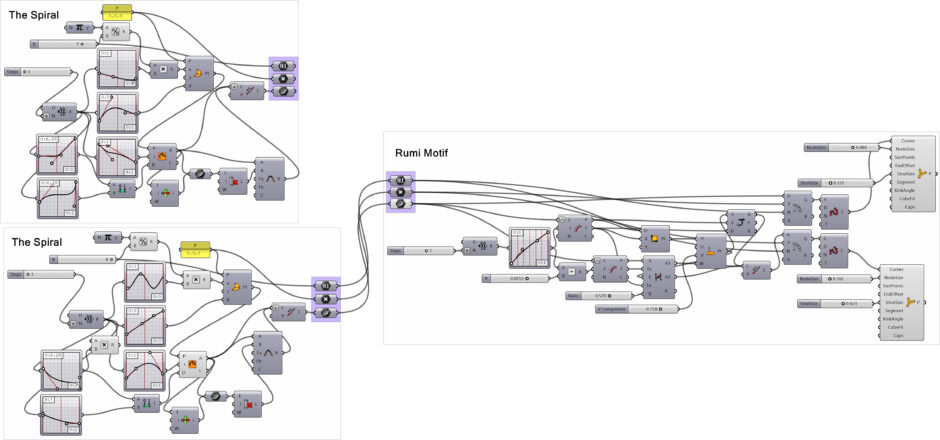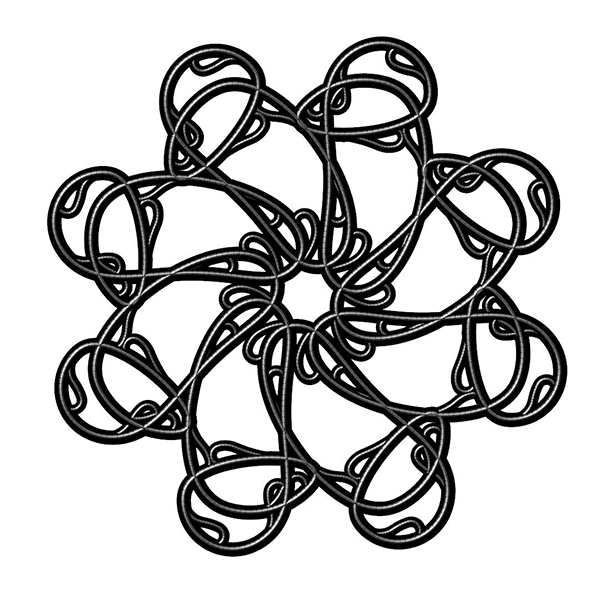Rumi Improvizations
In this short study, I generated Rumi Improvizations. The rumi motif, prevalent in traditional Turkish decorative arts like tilings, window lattices, and fabrics, features a round shape with a comma-like body. Despite resembling stylized leaves, rumis have zoomorphic origins. Rumi compositions depicted stylized animal figures, including birds, lions, deer, fish, and mythical creatures like dragons and Simurg. They symbolized strength, fertility, and the eternal struggle between good and evil. The oldest rumî-like animal shapes were discovered on rugs found in southern Siberia, dating back to the 4th century B.C. However, the earliest examples of complete rumîs are dated to 8th-century frescoes of Uyghur Turks. In these frescoes, rumi is on the wings of sea creatures. The Seljuks brought the motif to Anatolia, naming it after the region. The term “rumi” signifies Anatolian or belonging to Anatolia, as the Anatolian peninsula was “Diyar-ı Rum” during the Eastern Roman Empire. Anatolian Seljuks extensively utilized rumi between the 11th and 14th centuries. Then, over time, as the Ottomans embraced Islam, the motif lost its zoomorphic roots and shamanistic meaning, evolving into an abstract shape.

This Grasshopper definition generates Rumi-like compositions. It is possible to play with the Graph Mappers to explore new designs. The output of the definition is a set of curves and sub-d surfaces. Therefore, it is suitable for 3d printing. The code is using native Grasshopper components. Therefore, no add-ons are necessary for it to work.

You can re-create this definition by looking at the above image. However, if you want to download and use my Grasshopper file; would you consider being my Patreon? Here is the link to my Patreon page including the Rumi Improvizations, and more.









